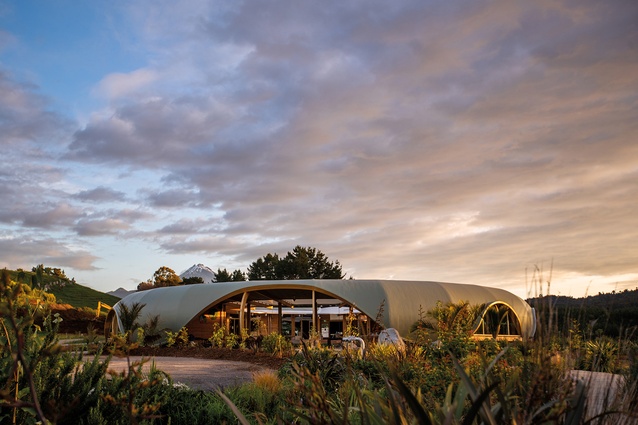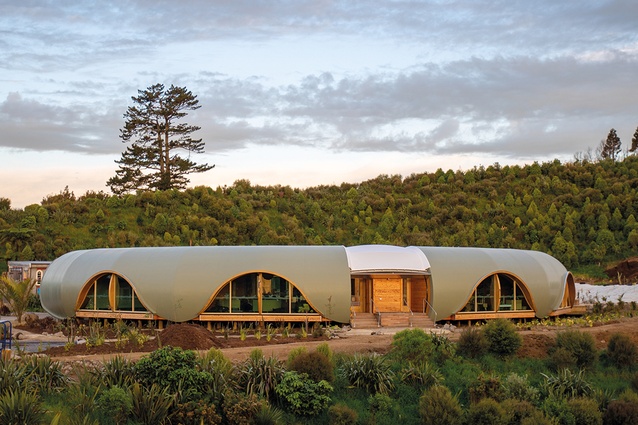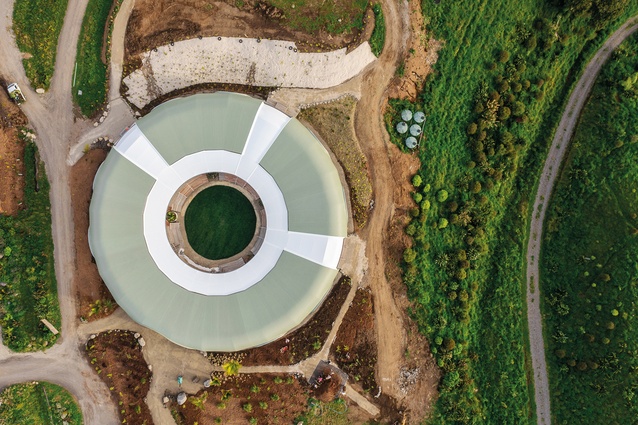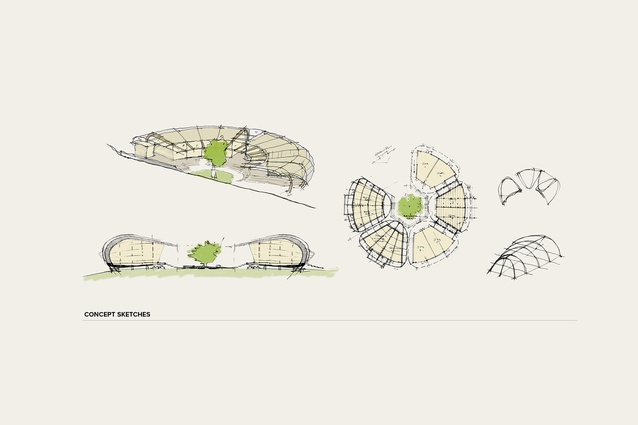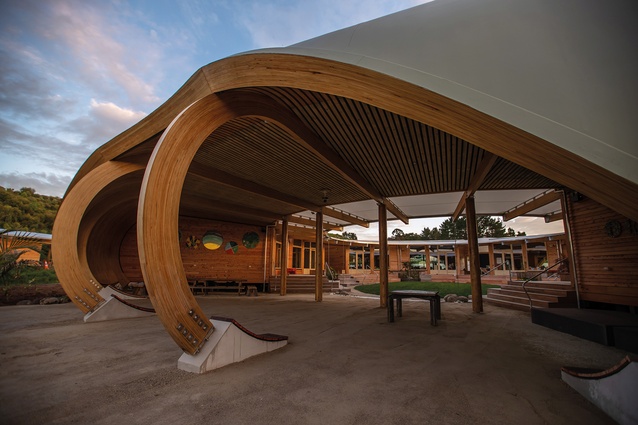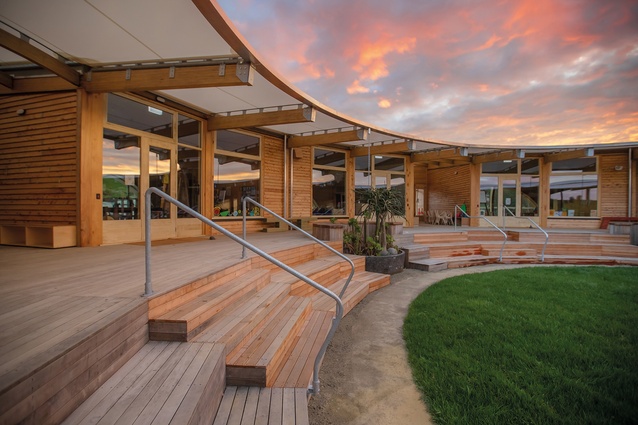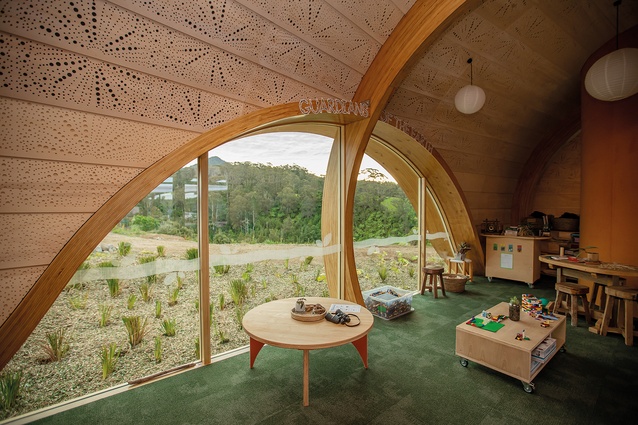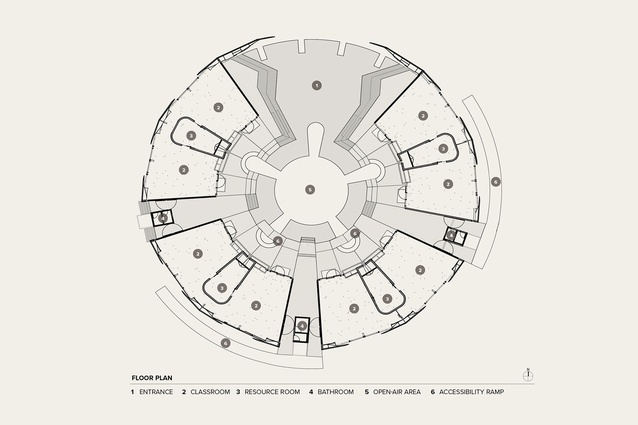The curve of the kina
In 2019, Green School founders Michael and Rachel Perrett invited New Plymouth-based architecture practice Boon to design a learning hub for Year 1 to Year 13 students in Taranaki that followed the holistic Green School educational philosophy.
The concept originated in Bali, where a school was opened in 2008 with the idea that cognitive function and emotional well-being could be enhanced through immersion in nature, hands-on projects and reality-based learning. Built using bamboo as the primary material, the Green School Bali was designed to be a school with no walls, dissolving the boundaries between inside and outside and provoking positive physiological responses from occupants through an immediate connection with nature.
Contemplating the variable weather systems (cue Neil Finn) across New Zealand — at times a wild mix of both subantarctic and subtropical — the neuroarchitectural language of Green School Bali needed some clever translation and innovative thinking to fit west coast Taranaki’s weather extremes.
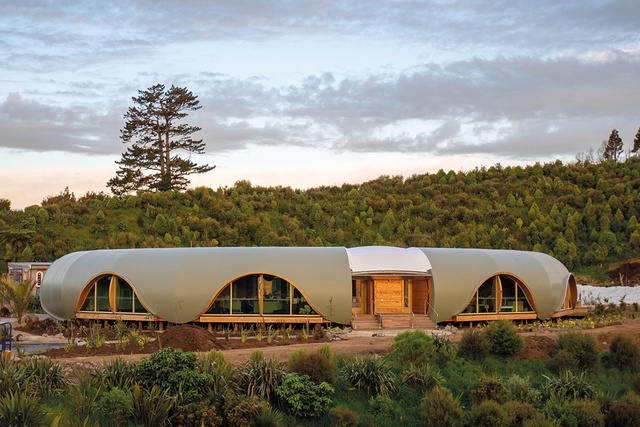
Attention to landscape and natural environment has also influenced each stage of the Green School development. Located several kilometres south of New Plymouth, the school is nestled into a five-hectare site that is part of a larger farm where, importantly, an extensive land restoration and native reforestation project is under way. Widespread loss of biodiversity across the region as a direct result of years of deforestation has prompted local communities and environmentally conscious organisations, including the Green School, to work together to restore native forests and waterways. While the planting and landscaping across the site began in earnest only in 2018, the positive environmental impact is already apparent.
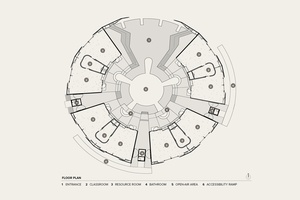
Perhaps in contradiction to the highlight of the Bali brief, ‘a school with no walls’, the focus of the New Zealand brief was to create shelter, at speed. The time frame was tight and, in less than one year, the project moved from preliminary concept to being open for learning. Design for the first stage started in March 2019 and construction in July 2019, followed by the opening in February 2020, immediately prior to the first 2020 Covid-19 lockdown. Shipping containers, sourced from the Christchurch Cashel Street Container Mall, expedited the provision of spaces for administration, storage, ablutions and riverside classrooms, while the use of digital technology and offsite fabrication meant that design and installation of three large classroom spaces could also be completed as part of stage one.
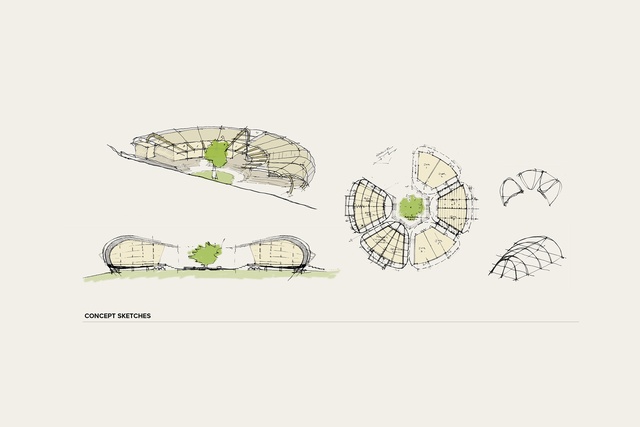
To break down the idea of people inhabiting a box (without walls), Boon introduced curves into the design at an early stage, with a view to using a form that comes from nature, and devised three ‘Waka’ pods, allowing for six teaching spaces. The substructure was designed first with only an idea of the shape of the spaces above and construction kicked off while the design of the superstructure was detailed. Glulam timber was the obvious choice for the primary structural elements. Not only was it a material in which the structural engineers had an interest and with which they had worked before but, also, it fit the project brief, which called for low-carbon, sustainable and energy-efficient design.
The simple pod concept belied the complexities of the design, which was curved in two planes. Sheet materials had to be pattern cut and CNC machined off site to avoid the excessive material wastage that would have resulted from a traditional membrane cladding a curve in two directions. Boon collaborated with Structurflex to design a tension membrane solution, which was then installed onto circular galvanised rails over the entire pod and lashed down. The floor of each classroom pod was constructed using Taranakipine Woodspan mass timber panels, which provide the structural base for a ceramic screed layer and an integrated hydronic underfloor heating system. Postoccupancy monitoring has demonstrated the efficiency of the heating, which is in use for only short periods of time during winter months to maintain a comfortable temperature. A heat-exchange ventilation system is used in combination with natural cross-ventilation to keep classrooms cool during summer.
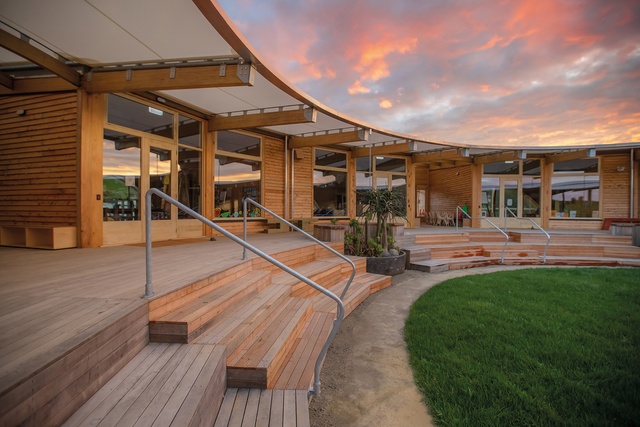
Following the research and development that was invested into the stage one pods, the design team was able to review every element and idea in terms of how useful or relevant it would be for the next stage, and what further developments were needed to allow for occupants’ needs but also to aid building code compliance. While New Plymouth District Council had specific requirements around alternative solutions, clear communication and a careful but common-sense approach was taken towards approving weathering details. This meant that innovations used for the first stage could be used as the platform, in terms of design, for the next stage.
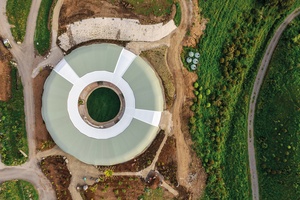
Construction on the next architectural stage, the Kina, began in 2021 and was designed to be multipurpose but, primarily, for the use of the youngest children at the school. Observations from stage one showed that, when new-entrant students arrived on site and entered the existing large, open classrooms, some would appear to be overwhelmed by the high ceilings and volume of space around them. Taking this into consideration, the concept for the junior school needed to be one of welcoming, enclosure and connection to the earth. As the concept evolved, the shell of the kina became the inspiration for the overall building form: a natural, protective cocoon shape, contextually appropriate and ideal for creating a plan of segments, or pods within a pod. The resolved design is a cluster of eight classrooms which border sheltered decks, allowing movement between spaces in all weather conditions and surrounding a grassed courtyard. Each classroom is connected to the next with functional, covered open-air spaces that accommodate bathrooms and storage of bags, shoes and coats without cluttering learning areas.
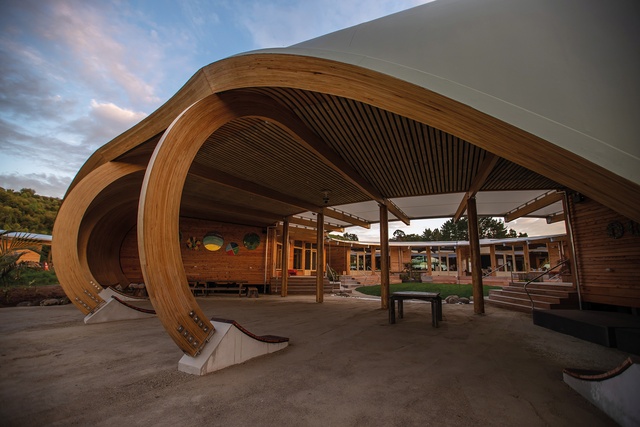
Unlike the dual-plane curves of the open-volume classrooms, the curve of the Kina is on a single plane; this meant that space planning was rational and fabrication of materials was a simpler process. A Viking Enviroclad membrane, in Patina Green, over a plywood substrate, wraps snugly around the beautifully sculpted structure, effectively realising the kina metaphor in both shape and colour.
As with stage one, material wastage was consciously reduced through offsite fabrication, and the use of foams and glues was minimised, enabling the building to be dismantled and recycled at any stage. Timber was used as the primary building material — for structure, exterior cladding and interior linings — and Micronised Copper Azole timber treatment was favoured over CCA (Copper Chrome Arsenate), other than for the in-ground members. Treatment of exterior timbers was avoided altogether where possible; this is seen in. the use of macrocarpa for non-structural elements and South Island beech for exterior decks and balustrades.
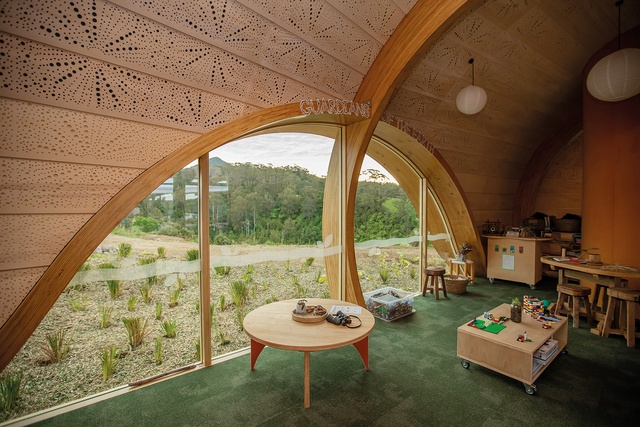
Designing for thermal and acoustic comfort was an intrinsic part of creating a cocoon-like quality for the interior environment of the junior school. Unlike for the classroom spaces that were designed for stage one, which have reflective surfaces and large interior volumes (these were designed at speed with a view to resolving acoustic issues retrospectively if they arose), careful consideration was given to the visual and audio qualities of the Kina’s spaces from concept through to developed design. As a result, the classrooms are quiet, warm and inviting. The interior experience is enhanced with a combination of both thermal and acoustic insulation, extensive use of timber and the visual references to the kina. This is seen in colour, with fabric in the orange of roe stretched over interior panels, and in the distinctive patterns of the plywood lining perforations, which were traced directly from an image of a kina shell.
Despite the design challenges and the rawness of the surroundings, the Kina meets the brief architecturally and provides an ideal starting point for an environmentally conscious educational journey. From here, as student ages increase through to the middle and senior years, the learning spaces, in built form, rise out of the ground following the progression of learners as they become more independent. Beyond the architectural environment, the vision of transforming farm paddocks into a place that inspires students to connect meaningfully with nature has begun to be realised and, with continual work, time and patience, the Green School community will indeed ‘thrive with purpose’.

